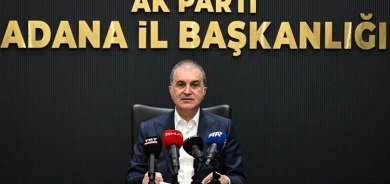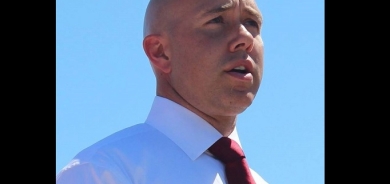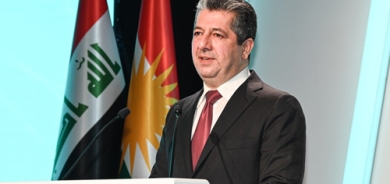Queen Elizabeth II and Africa: From an iconic dance in Ghana to friendship with Mandela

Elizabeth II maintained special ties with Britain’s former colonies and the members of the Commonwealth states in Africa. From the beginning of her reign in Kenya to her memorable meetings with Kwame Nkrumah and Nelson Mandela, the Queen had a long-standing relationship with the African continent.
Elizabeth II visited Africa 21 times during her 70-year reign. According to the British Royal Family’s website, the Queen had visited nearly every country in the Commonwealth, yet some overseas visits were more impactful than others. Her first trip was particularly important.
On February 6, 1952, Princess Elizabeth and her husband Philip, already parents of Charles, born in 1948, and Anne, born in 1950, found themselves in the heart of the Aberdare mountain range, in central Kenya. They planned to spend a night at Treetops, a game-viewing lodge located 7,000 kilometres from England.
In the morning, the news came: George VI, Britain’s monarch for the last 15 years, had just died at the age of 56. With his death, the crown passed down to his eldest daughter, then in a distant country that was not yet a member of the Commonwealth – Kenya would not join until 1963. Elizabeth II would not learn of the death of her father until after her departure from Treetops, but it was in that hotel that her reign began.
"I am quite certain that this is one of the most wonderful experiences the Queen or the Duke of Edinburgh have ever had," read a letter dated February 8, 1952, written by an aide to the royal couple, responsible for thanking the owners of the hotel. Treetops burned down in 1954 and a new, much larger establishment has been built since then.
Elizabeth II briefly returned to Kenya in March 1972. In November 1983, she and her husband stayed in the country for four days and returned to Treetops, the lodge where she found herself when she became queen. This time she and her husband were more formally dressed. The Queen set foot in Kenya for the last time in October 1991.
On Friday, September 9, 2022, Uhuru Kenyatta, the outgoing president of Kenya and son of Jomo Kenyatta, the former president who welcomed the Queen in 1972, paid tribute to Elizabeth II in a message of condolence. "Her Majesty Queen Elizabeth II was a towering icon of selfless service to humanity and a key figurehead of not only the United Kingdom and the Commonwealth of Nations, where Kenya is a distinguished member, but the entire world," he wrote.
Kenya's new President-elect William Ruto also paid tribute to the Queen on Thursday, hailing her "admirable" leadership of the Commonwealth. "May her memories continue to inspire us. We join the Commonwealth in mourning and offer our condolences to the Royal Family and to the United Kingdom," he said, after describing the evolution of the Commonwealth as a testament to "the historic legacy" of the Queen.
In Ghana, an iconic dance with Kwame Nkrumah
Of all her tours in Africa, the one at the end of 1961 was among the most crucial, says Meriem Amellal Lalmas, a journalist at FRANCE 24. The Queen decided to travel to Ghana from November 9 to 20, despite opposition from the British press and politicians, who were wary of a visit at a time when Kwame Nkrumah, then the Ghanaian president, was drifting towards authoritarianism. Winston Churchill himself, a mentor to Elizabeth II, even called the prime minister at the time, Harold Macmillan, and asked him to convince the Queen not to visit the country that had declared its independence in 1957.
The sovereign refused to cancel the visit. She knew her visit was eagerly awaited. The upcoming birth of her third child, Andrew, had already forced her to cancel the trip in 1959 and Nkrumah had taken it badly. To ease tensions, the royal family had invited him to Balmoral, where the head of state had spent a few days with the Queen. Later, Prince Philip travelled to Ghana and promised an upcoming visit from his wife.
It was a high-stakes visit. Nkrumah, a Marxist, was cosying up to the Soviet bloc at the time and threatened to slam the door on the Commonwealth. Upon her arrival, the British Queen was very well received by the Ghanaian authorities. However, it was during a ball organised in her honour that she managed to turn the tide of public opinion: in front of the world’s cameras, she danced with the president of Ghana.
"This image seems mundane today but in this context, it was extremely avant-garde. It was a white woman dancing with a black man, it was the ruler of an empire dancing with a subject, as he was then considered, even if he is also the father of pan-Africanism and Ghanaian independence", explains Meriem Amellal Lalmas.
The Queen's visit did not prevent Nkrumah from getting closer to the Soviet bloc, but it did stop Ghana breaking away from the Commonwealth. The Queen reassured the president and helped him obtain funding. Nkrumah later declared: “The winds of change blowing through Africa have become a hurricane. Whatever else is blown into the limbo of history, the personal regard and affection which we have for Your Majesty will remain unaffected.”
Last Thursday, Ghana's current president, Nana Akufo-Addo, was the first head of state to react to Elizabeth II’s death. On Twitter, he wrote: "As Head of the Commonwealth of Nations, she superintended over the dramatic transformation of the Union, and steered it to pay greater attention to our shared values and better governance. She was the rock that kept the organisation sturdy and true to its positive beliefs. We shall miss her inspiring presence, her calm, her steadiness, and, above all, her great love and belief in the higher purpose of the Commonwealth of Nations, and in its capacity to be a force for good in our world."
Nelson Mandela, the friend from South Africa
A member of the Commonwealth since its foundation, South Africa was a special country for Elizabeth II. She toured the country on her first trip to the African continent, in 1947. It was there, on her 21st birthday, on April 21, 1947, that the future queen declared in a speech that she would dedicate her life to the service of the Commonwealth.
Faithful to the tradition of neutrality, the Queen did not speak out against apartheid until the end of the racist regime. In his book "Great Britain and the World" (ed. Armand Colin), the historian Philippe Chassaigne explains that Elizabeth II did not want to go to South Africa again "because it would have meant supporting the policy of apartheid”. She was only able to provide discreet support to Brian Mulroney, the Canadian prime minister who was campaigning for economic sanctions against South Africa in the beginning of the 1980s. Margaret Thatcher, then British prime minister, was on the opposite side.
The complicated relationship between Elizabeth II and Margaret Thatcher was also embodied in the United Kingdom's approach to Nelson Mandela: while the "Iron Lady" considered the African National Congress (ANC), the party of Madiba, a "terrorist organisation", the Queen reached out to the future South African leader who had spent 27 years in prison. Shortly after his release in 1990, she welcomed Nelson Mandela to the United Kingdom. When Mandela won the presidential election five years later, the queen traveled to South Africa to meet with him.
Previously, in 1991, Elizabeth II broke with protocol by inviting Mandela to the Commonwealth Summit in Harare, Zimbabwe, even though he did not have the required rank to attend the Queen's banquet. The Queen, aware of the symbolic significance of this invitation, had already lost some of her reserve when she said that she was content to see the end of apartheid.
Reacting to the Queen's death, the Mandela Foundation published a press release on Friday evoking the very friendly relationship between these two major figures of the 20th century: "They also talked on the phone frequently, using their first names with each other as a sign of mutual respect as well as affection [. . .] In the years following his release, Nelson Mandela cultivated a close bond with the queen”, whom he had nicknamed “Motlalepula” (“come with the rain”), after her 1995 visit which was marked by torrential rains.
Complicated relations with Robert Mugabe's Zimbabwe
The only country in Africa to have left the Commonwealth, Zimbabwe had been a complicated and cumbersome partner for Queen Elizabeth II. In 2002, the organisation decided to suspend the country from its Council, as a way of sanctioning of the presidential election organised that year. Elected in 1990 and re-elected in 1996, President Robert Mugabe won against Morgan Tsvangirai with 56.20% of the vote in an election marked by violence and fraud.
A year later, Zimbabwe decided to slam the door of the Commonwealth, outraged to learn that the organisation wanted to maintain its suspension. Robert Mugabe took the opportunity to describe the Commonwealth as an organisation run by "racist whites". In 2008, he was newly re-elected, with 90.22% of the vote, in a race that was once again denounced by many democracies in the world.
In June 2008, the crack between London and Robert Mugabe grew wider: David Miliband, the minister of foreign affairs, proposed to strip the Zimbabwean president of his honorary knighthood, which had been awarded to him in 1994, with the approval of Elizabeth II. "This decision was taken as a sign of revulsion at the human rights abuses and abject disregard for the democratic process in Zimbabwe under the rule of President Mugabe," the British Foreign Ministry wrote in a statement.
France 24















